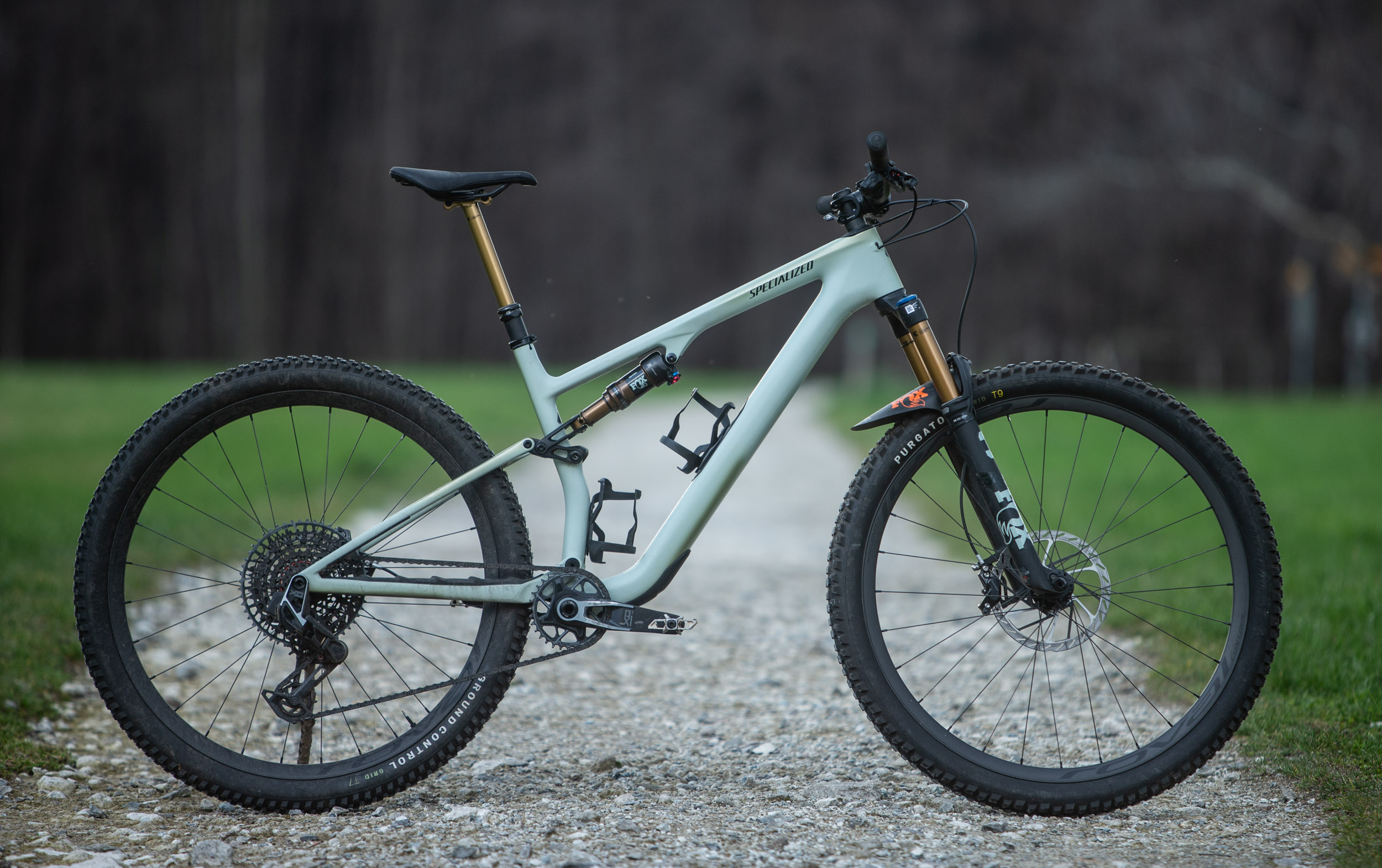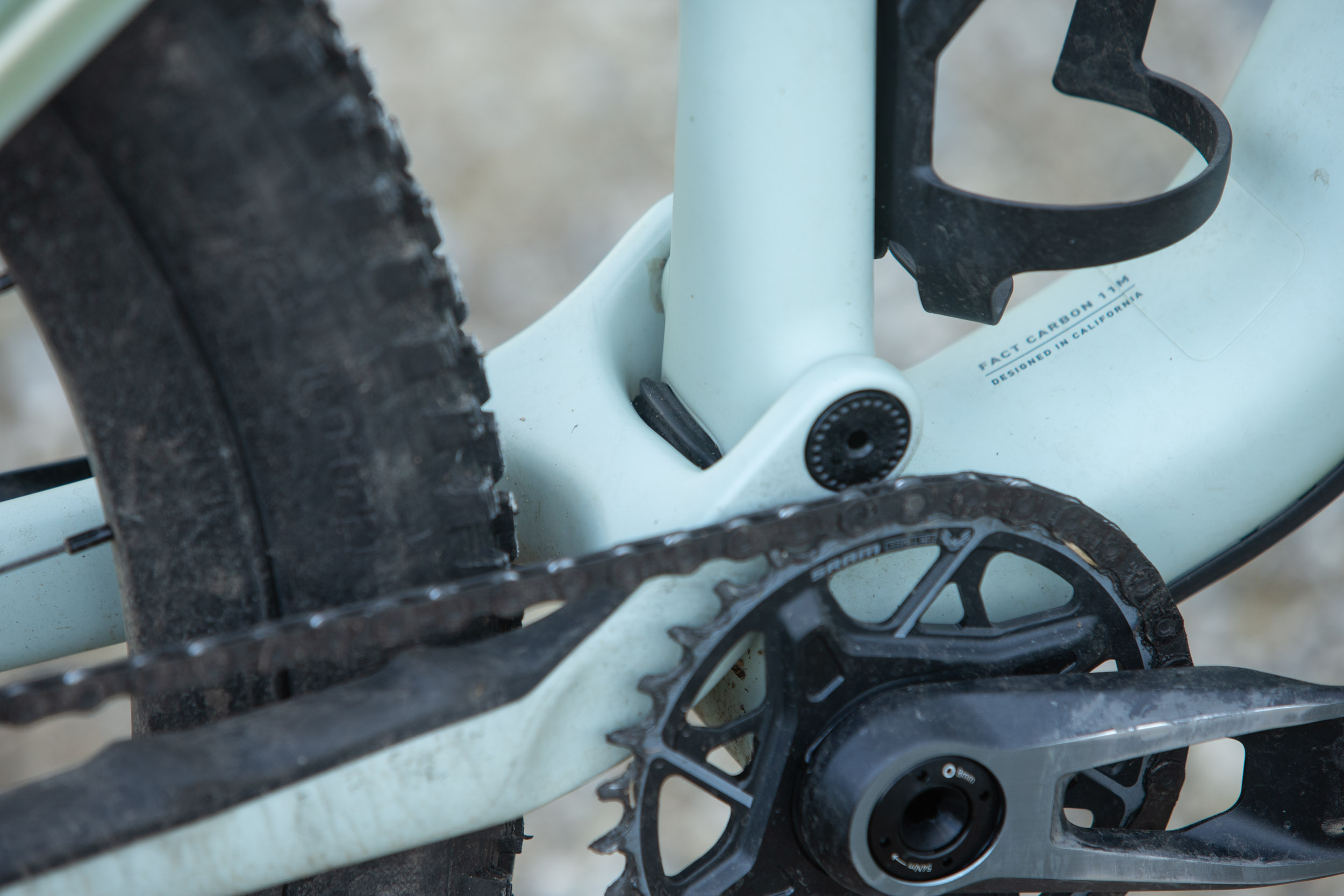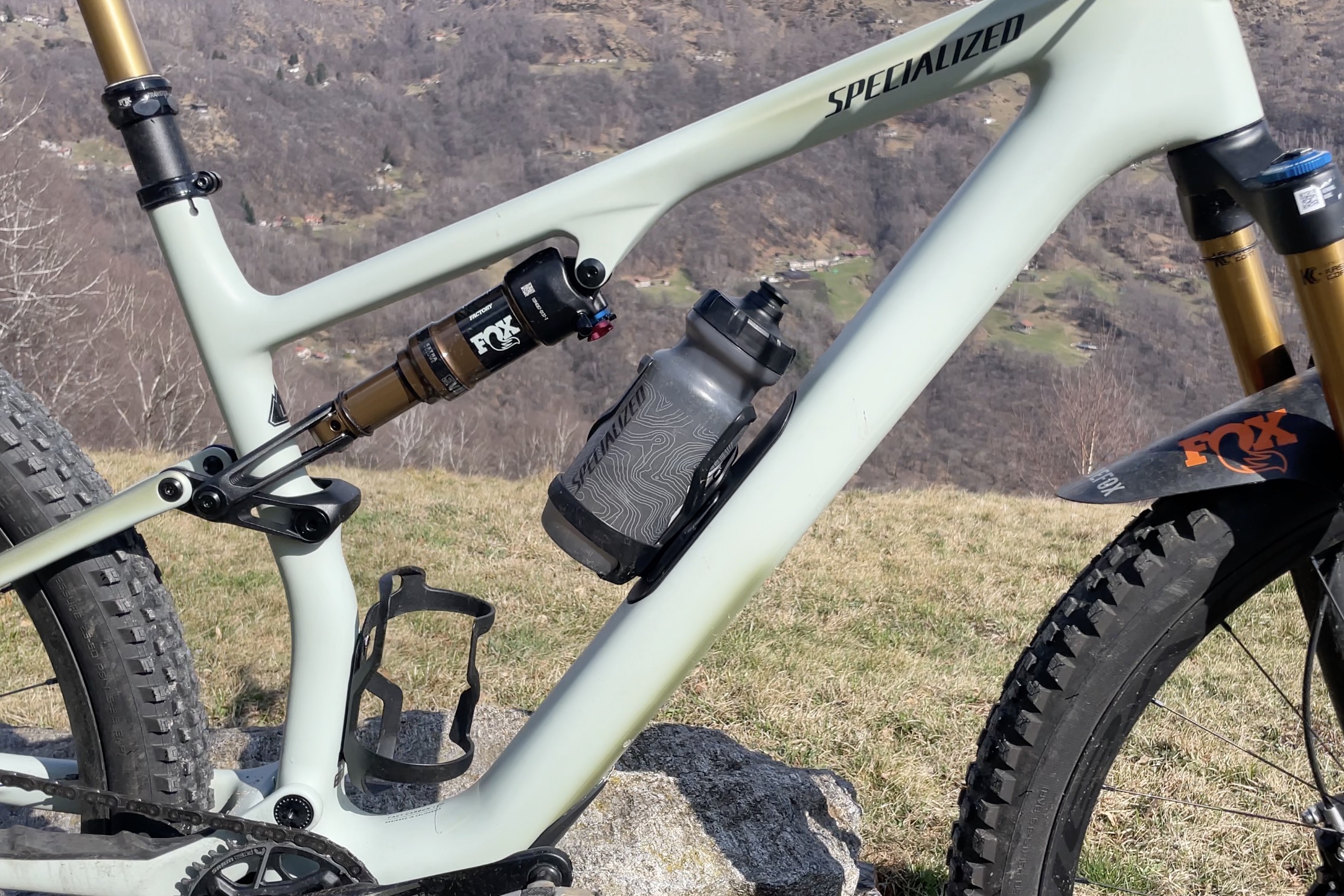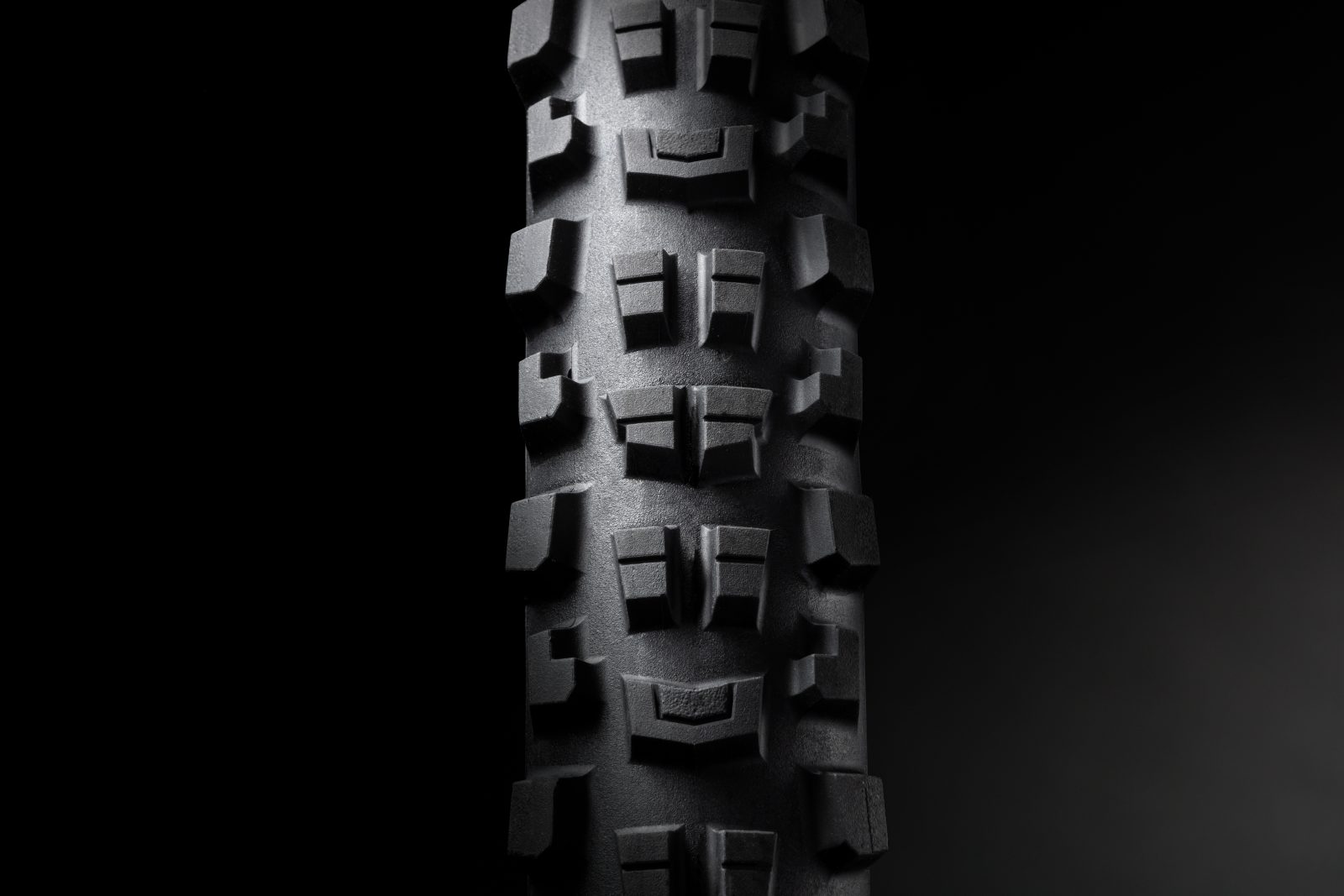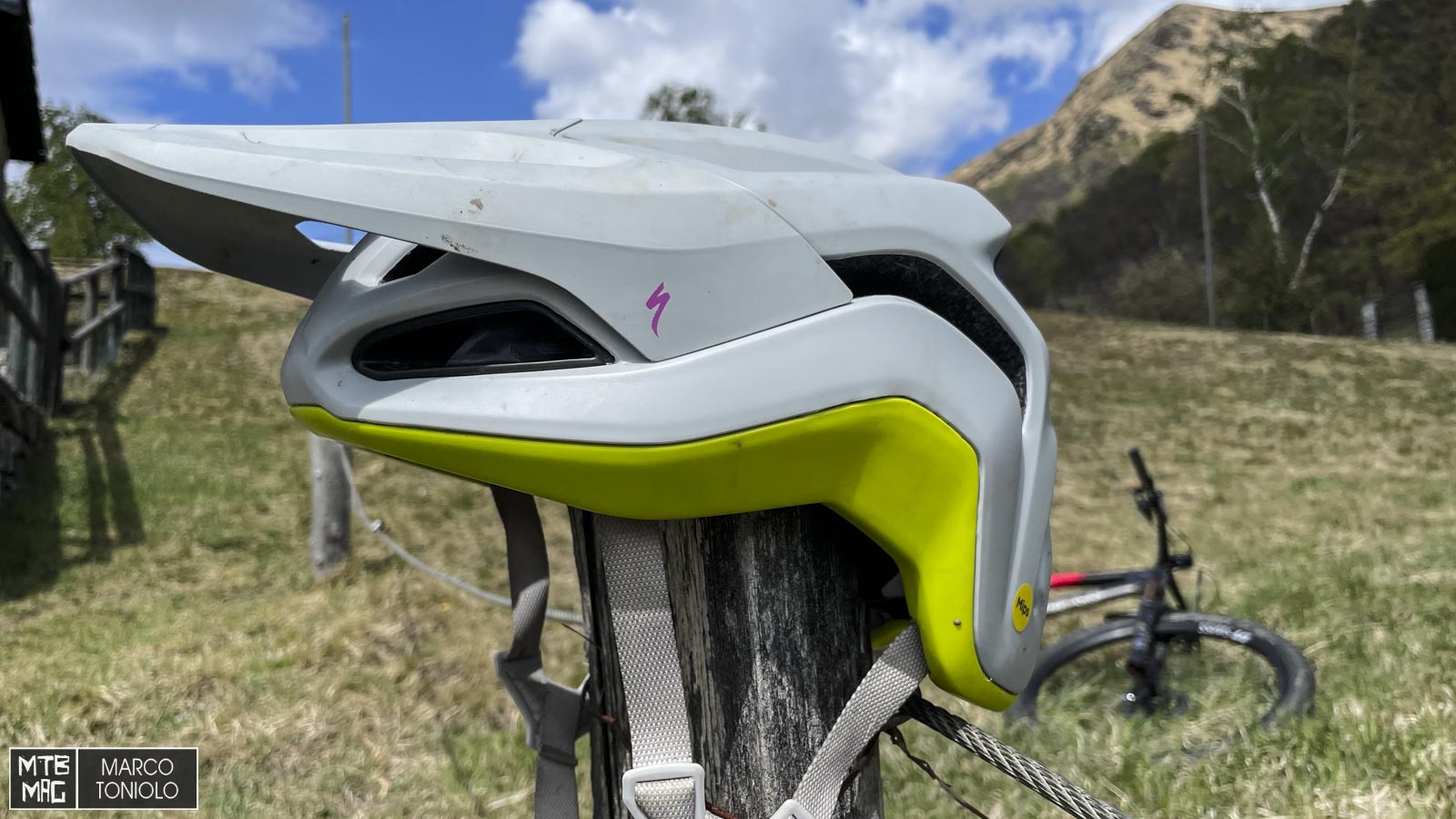Specialized presents the new Epic 8, and with it the Evo version, i.e., the one with more travel. The number can only bring to mind the Tarmac 8, unveiled last year, effectively aligning two of the California brand’s most beloved models.
Once again, the race version of the Epic differs greatly from the “downcountry” version, but, contrary to what happened in 2020, the Epic 8 Evo is unlikely to be used in competition instead of the Epic 8, which you see in the photo below. In fact, the latter already has 120/120mm of travel, forgoes the Brain in favor of the Rock Shox Flight Attendant, and has a weight without pedals in size M of 10.5 kg, compared to the 12.48 kg of the Pro model in size L, i.e. the top model, of the Epic 8 Evo, with multitool in the headset. The wheels are 29 inches and the frame completely made of carbon.
It’s hard to call it a donwcountry MTB, not least because we find a Fox 34 fork with 130 mm of travel without lockout, sturdy tires and a shock trail tuned, as well as SRAM Code brakes. In the video (in Italian) you will find all the details and field test of the Epic 8 Pro Evo. For details of the Epic 8 go to the Specialized website. Prices for both models can be found at the bottom of the article.
Geometry
The Epic 8 Evo has a flip chip camouflaged in the shock mount to the linkage. The size under test is a perfect L for me who is 179cm tall and has a saddle-to-bottom bracket distance of 74cm.
Details Specialized Epic 8 Evo
Like the previous model, this Specialized Epic 8 Evo also cares a lot about substance: no remote control for the suspension lock out, rear shock with two positions (as opposed to 3 on the race version), sturdy tires. We find the storage compartment in the down tube in both models, so get ready to see some XC champ pulling out snacks during races.
The lid attachment mechanism has been changed, an operation that is now easier thanks to a lever. The hole is long enough to fit a pump to inflate the tires, which is not a given, as we saw a few weeks ago here.
We also find the seatstays flexing on the Epic 8, as the pivot is missing. A solution now ubiquitous on all MTBs of this travel.
Thank you Specialized for this cable routing in the frame and not in the headset. No plastic turrets and easier maintenance.
Virtually impossible to see, in part because there is no lasered lettering to indicate it, the eccentric that allows you to vary the geometry of the Epic 8 Evo, located on the shock mount with the linkage.
Going back to talking about cable routing, this is routed in the frame, so the cables don’t make noise and are easy to replace. The rubber protection between the rear end and front triangle prevents dirt from entering the bottom bracket.
In addition to the guided cable routing, the quietness of the Epic 8 Evo also comes from the rubber that protects the chainstay (or rather, the chainstays) from the chain, which for its part swings very little thanks to the tensioning of the new SRAM AXS T-Type drivetrain, which has a very strong clutch.
What makes this bike more of a trail bike than a downcountry bike is primarily the Fox 34 non-Step Cast fork…
… followed by the tires. In fact, we find a Purgatory 2.4″ Grid T9 tire up front and a Ground Control 2.35″ Grid T7 tire in the back. In particular, the Purgatory offers a lot of grip when going downhill.
Finally, the brakes are also the kind you won’t find on a downcountry bike: SRAM Code Silver, with HS2 200/180mm rotors.
Wrpping the trail package is the headset’s inserted multitool, convenient to reach when you need it and also equipped with a chain breaker.
Specialized EPic 8 Evo on the trail
Compared to the old Epic Evo I tried four years ago, the new one has put on a couple of pounds (12.5 vs. 11.5 kg) but for good measure, because its character has changed completely: from cross country to trail bike. This is noticeable not only downhill, but also uphill. In fact, the antisquat has decreased and in the open position we have a suspension that is more sensitive to small bumps but also more prone to bobbing. On paved and dirt climbs I used the shock lockout, which is pretty much a complete lockout. The fork lockout is missing, so don’t expect to be able to sprint as if you had a race bike, but I don’t think that’s the goal of those who will buy the Epic 8 Evo.
Rather, I think the typical buyer will be the mountain biker who enjoys long rides, possibly with lots of meters of elevation gain, peppered with technical descents without KOM anxiety. Because while it’s true that it climbs better than a 140/150mm trail bike, downhill is where the Epic 8 Evo reaches its limits when the terrain is both rocky and fast at the same time. Then again, the travel should speak for itself: with 120mm at the rear, you can’t expect to descend like on an enduro bike.
However, that’s precisely the point that makes the new Epic special: it’s a true all-rounder, in the sense of how mountain biking is understood by those who want to reach an alpine pass after 1,500 meters of climbing to ride a nice downhill trail without performance stress. The position in the saddle is typical “Specialized,” that is, easy: the rider is immediately comfortable with the length of the frame its geometry, without having to adapt.
I think a lot of you notice how the whole classification of mountain bikes is shifting: what used to be trail bikes, i.e., the segment with 140/150mm of travel, now weigh like the old enduros, i.e., around 15kg. See the Trek Fuel Ex, the Cannondale Habit LT or the recent Canyon Spectral CF. In their place come the vitaminized “downcountry” bikes, such as this Specialized Epic 8 Evo the Scott Spark with equal travel.
It is no coincidence that this Evo mounts tires with a lot of grip and quite strong, but which have nothing to do with XC. Ditto for the brakes. Okay, they may not be the most powerful on the market, but they are the same ones we find on the three trail bikes I mentioned above, and on many enduro bikes.
I find that the Epic 8 Evo is at its best on technical uphill trails or trails with lots of ups and downs, such as the San Lucio – Monte Bar crossing that I exceptionally managed to do in mid-February 2024. It really gave me the feeling of a bike you never get tired on, aided by its low weight and the excellent way the suspension works. The only time I got tired was at the end of the ride, after the 1,000-meter descent, when the SRAM brakes required me to push the lever hard. What got tired were the forearms. This got worse over time as the brake pads wore out.
It is worth mentioning the coloring of the frame, a “dirty” greenish that I find suits the character of this mountain bike perfectly: what real biker wants a bike that looks like it just came out of the car wash?
Prices and builds
The model under test is the Epic 8 Pro Evo.
The lineup can be found on the Specialized website.
